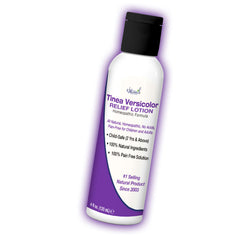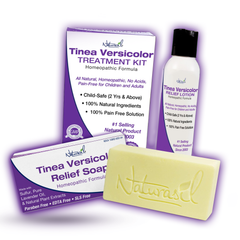Delving into the Realm of Skin Yeast Infections and Demystifying its Truth
What begins as a small discolored patch of skin on your shoulders, neck, or torso can swiftly progress into a myriad of skin blotches, which can advance throughout your body. Upon first glance, this noticeable alteration in skin texture and color evenness may appear to be the symptoms of a highly contagious skin infection. After going to your physician, you uncover the source of this annoying condition. Thankfully, it's not a rare disease but a common skin yeast infection known as Tinea versicolor. Even though the term "common" eases your mind, most patients suffering from this condition have a universal question: "Is Tinea Versicolor contagious?" Moreover, "How did I catch this skin infection?"
Although the physical appearance of Tinea versicolor can be cause for concern, the reality of this condition is far less severe than many initially thought. If you, or someone you know, is suffering from a tinea outbreak, continue reading to uncover the truth and myths about this very human skin condition.
Finally, an Answer: Is Tinea Contagious?
Before delving into how this condition started, let's answer the question on everyone's mind: No, Tinea versicolor is not contagious. Unlike other skin infections, which result from bacteria or viruses, the proliferation of tinea has nothing to do with coming in contact with an infected person. The progression of this infection is solely based on your unique physiology and local climate. Since this condition is not contagious, how does one get it?
To understand the cause of Tinea versicolor, you must understand your body. Along the surface of your skin, millions of microscopic yeast and fungal cells form what is known as skin flora. This yeast lives on everyone's skin. While researchers aren't sure why yeast on some overgrows and not in others, there are several clear facts regarding tinea versicolor:
The proliferation of Tinea versicolor is found in all genders and all races. Skin color does not play a role in being more or less likely to develop this condition.
Preliminary research found that teenagers and young adults are slightly more likely to develop tinea due to increased skin oil production. Oily skin is much more likely to be susceptible to tinea.
Older adults and prepubescent children are the least likely to develop this condition. Those living in warm tropical or subtropical climates are the most likely to develop this condition, regardless of age or skin condition. People who experience Tinea versicolor in non-tropical environments typically experience reduced or eliminated symptoms during the fall and winter.
The Causes of Tinea Versicolor: Causes of Yeast Overgrowth
The actual cause of Tinea versicolor is a unique fungus known as Malassezia furfur, which is present on the skin of most adults. While this component of skin flora typically lives completely unnoticed, it can transform into what is commonly known as Tinea versicolor. The medical community needs to understand the exact triggers of this transformation fully.
However, several factors seem to be universal among those who suffer from this yeast infection:
High humidity and tropical climates: There is a direct connection between high temperatures and thick air moisture regarding the overgrowth of skin flora, specifically the dimorphic fungus Malassezia furfur.
Excessive sweating is a common factor in outbreaks. Researchers suggest that constant moisture promotes excessive yeast growth, which may result in tinea versicolor symptoms.
Lowered immune system due to other diseases or medications. Your immune system plays a direct role in regulating the development of skin and gut flora. The likelihood of developing tinea versicolor increases when the immune system is compromised.
Hormonal changes seem to trigger some individuals; however, the actual influence of hormone fluctuations requires further investigation by the scientific community.
While there is still much mystery surrounding this common yeast infection, the medical and holistic communities have cultivated numerous effective treatment options. Although many treatments can eliminate the signs and symptoms of Tinea versicolor, the physical evidence of a previous infection can take months, if not a year or two, to completely disappear.
Even though the skin discoloration commonly associated with this infection may take some time to smooth out, other symptoms, such as new discoloration and itching, should disappear within two to four weeks of treatment. Of course, the proliferation of this infection continues after four weeks of consistent treatment. In that case, you should visit a dermatologist for prescription-strength ointments.











